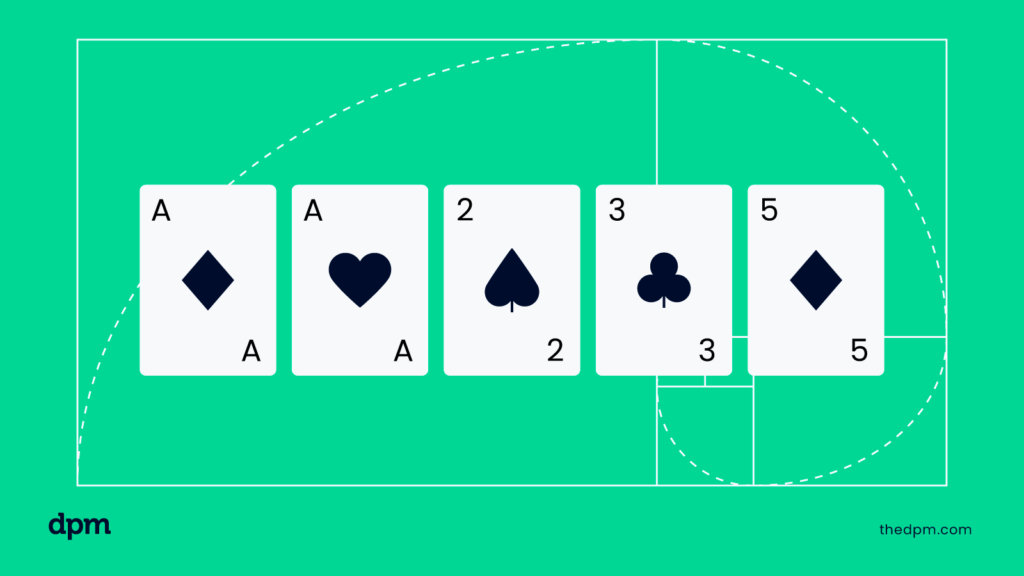Have you ever provided estimates and felt that you were taking a huge gamble on whether or not your estimates were accurate? Estimating does not have to be an all-in gamble.
There are agile estimating and planning techniques like planning poker that can help project teams accurately estimate efforts required for project activities and tasks.
In this article, I’ll take a look at what planning poker is and how you can use it for planning your projects. Ready to start? As they say in the world of poker, let’s “shuffle up and deal!”
What Is Planning Poker?

Planning poker is a game-like estimation technique that teams can use to predict the effort they’ll need to exert for each task on the project.
Most commonly used in agile project management or by teams following agile principles, estimations take into account the entire team’s input, with the goal of making them more accurate than other methods.
Much like the game of poker in real-life, participants in a planning poker estimation session are given a deck of cards. The cards are numbered to represent different values to measure the time, effort and level of complexity required to complete a task.
When Does Planning Poker Happen?
There are a few different situations where it makes sense to 'deal everyone in' for a round of planning poker.
Before a new sprint begins
If a team is following an agile project delivery framework such as Scrum, planning poker should usually happen right before a sprint planning session.
The product backlog can be maintained with stories estimated using planning poker in agile project management software or agile tools such as Jira, Trello, and Smartsheet.
During activity estimations
If a team is using the waterfall project methodology, they could conduct a planning poker session when they are doing their activity estimations.
Instead of using techniques like analogous estimation, bottom up estimation, or parametric estimation (or relying on historical data), a project team would use planning poker to estimate all activities and tasks included in the work breakdown structure (WBS).
Who Should Be Involved In Planning Poker?
The whole team should be involved in a planning poker session, including:
- The team doing the actual work (such as the Scrum team)
- The product owner or product manager
- People on the development team, such as testers and UX designers
The project manager (or Scrum master, if it’s an agile team) is usually the one to facilitate a session, but it does not always have to be. Any member of the project team can facilitate or act as a moderator for a planning poker estimation session.
What is key is that all members who are estimating the work should have a good understanding of the project requirements and a general understanding of what is required to complete a task or activity.
How Does Planning Poker Work?
Ready to get your game on? Below are some steps that can be used to facilitate a planning poker session.
1. Have the team review the task to be estimated
Make sure everyone has a clear understanding of what work needs to be done and understands the scope. If there is uncertainty or questions, the task may need additional refinement. If the task feels like it is very large, consider splitting into smaller tasks or user stories in a refinement session.
2. Select a planning poker card individually that represents an estimate
Have each project team member select a card from their planning poker deck of cards that best represents their estimate of the task’s size in terms of effort, duration, and complexity. This should be done individually by each member without discussing with the other team members (this prevents bias and group-think).
3. Ask team members to show their card
Just like in real poker when players are competing for the pot of money and there is a show-down, each member of the team should turn over their playing card to reveal the value of their estimate.
4. Discuss the estimates from the team
This is where the team can discuss why they chose the number they did. Each estimator should be encouraged to be open and honest in sharing their estimate with the team. This discussion can reveal misunderstandings with the scope of work or generate additional questions that require clarification during the estimation process.
5. Decide on an estimate
If there is a significant variance between the low estimate and high estimate played in a round, have the members of the team re-estimate the task. The goal should be for the team to reach a consensus-based agreement on the estimate. The estimating process may need to be repeated until consensus is reached and the team members agree on a value for the estimate.
Sites such as Scrum Poker offer a free tool that can be set-up in minutes and shared with your team quickly. Other project management software such as Atlassian’s Jira also offer planning poker applications that are available to project teams (pricing may be based on an organization’s subscription or license).
What are the Benefits of Planning Poker?
Some of the benefits of planning poker include:
- Promotes collaboration and communication within the project team: If the team can discuss their estimates in an environment where they feel comfortable, this will encourage communication and collaboration among the team.
- Allows for more accurate estimates of task complexity, effort, and duration: As you are not simply estimating based on the time it will take for the team to complete a task, this will also allow the team to estimate how complex a task is. Likewise, it will provide estimates for not only how long an actual task will take (the duration of a task to be completed), but the amount of time to complete the task itself. For example, if there was a task to pour concrete for a new sidewalk, the effort may be for someone to actually pour the concrete, but the duration will include the time to pour the concrete and for it to be set.
- Helps to identify areas of uncertainty and risks: By asking the team to provide estimates and then discuss the rationale for their number, it can help to uncover any uncertainties or misunderstandings with the scope of work or requirements. It can also help to uncover any risks that may be present that may account for the complexity of the task (and may require some type of formal risk response).
- Allows for the prioritization of tasks: Planning poker can help the team to prioritize tasks based on their complexity. This may help the team deliver better value to the customer.
Drawbacks of Planning Poker
There isn’t always a pot of gold at the end of every estimating technique rainbow. And as such, there are a few drawbacks of using planning poker. These include:
- It can be time consuming: I ain’t gonna lie—conducting a planning poker session does take time and it can be time consuming if there are a number of tasks to estimate. When there is not a lot of consensus among team members, this can cause very detailed and in-depth discussions. This can be exacerbated if tasks and user stories are not well defined ahead of a planning poker session.
- It can be a challenge to reach consensus among team members: This can be hard as everyone brings their own unique perspective to their estimates based on their knowledge, comfort in completing the task, and professional experience. On the ends of the extreme you don’t want group-think, on the other you don’t also necessarily want a great chasm between the estimates of your team.
Why Does Planning Poker Use The Fibonacci Sequence?
So we mentioned this term called the “Fibonacci sequence” earlier and you might be wondering, “What is that?” and “why is it used in planning poker?”
The Fibonacci sequence is used in planning poker because it reflects an abstract sizing scale/sequence. The sequence is 0, 1, 2, 3, 5, 8, 13, 21, 34, 55, 89, etc. The popular Fibonacci sequence used more commonly in planning poker and recommended by Mountain Goat Software’s Mike Cohn (who popularized it for agile software development) is 0, 1, 2, 3, 5, 8, 13, 20, 40 and 100.
The values in the sequence increase by 60% exponentially. This means that the difference between the numbers becomes greater as the values get larger. This allows for more accurate estimates of complex tasks and helps to highlight areas of uncertainty from the team.
Learn more about planning poker and other key agile concepts by taking an agile certification.
What's Next?
Want to learn more about planning poker and other estimation techniques? Become a DPM member and join the conversation in Slack with 100s of other digital project managers.


